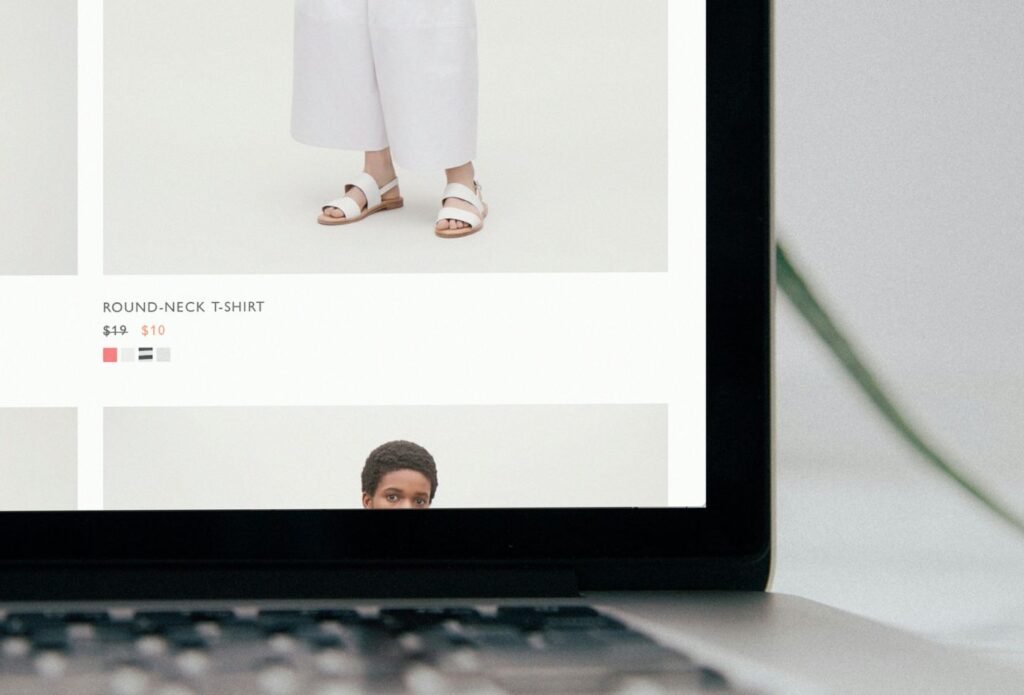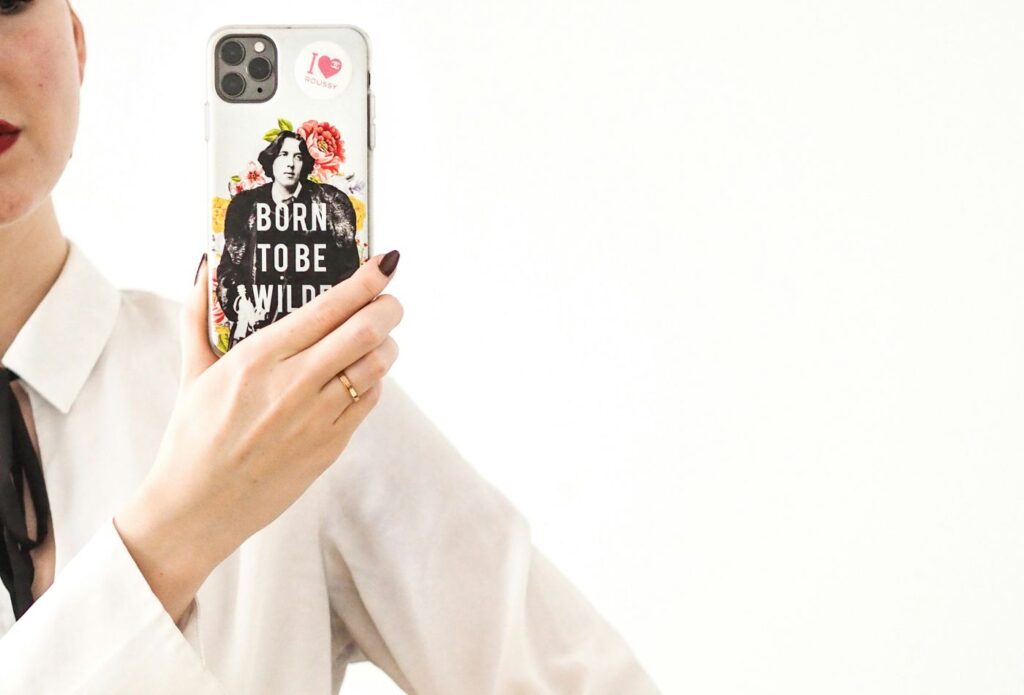
Valued at $820 billion in 2023, fashion is the world’s leading eCommerce industry. ASOS, boohoo.com and Revolve are among the top ten companies making the most online. While their vast followings and influencer collaborations work around the clock to build brand awareness, compelling content is at the heart of all these brands. In this blog, we are taking a look at the best clothing store product description examples to help you write your own. We discuss why you need them on your site and the best practices for good fashion content writing in 2024. Let’s get into it.
Why are good clothing product descriptions important in the fashion industry?
Product pages and their descriptions are the cornerstone of any good eCommerce store. The main reason why is pretty self-explanatory – it’s how potential customers learn about your products. But, while some brands think they can get away with a few stock images and copy lifted straight from the manufacturer’s website, your eCommerce content needs to be more than an afterthought. Here’s why:
- 87% of customers feel product content is the most important factor when deciding to purchase an item online, as they cannot physically see, feel, or smell the item.
- 53% of online customers will abandon their online purchase if they can’t find an answer to a quick question.
- 85% of shoppers surveyed say product information and pictures are important to them when deciding which brand or retailer to buy from.

Your fashion site’s product descriptions play a crucial role in attracting and engaging customers – new and old. Your customers want a positive shopping experience, they want to find trust in your brand, and they want to be confident that they’re giving you their money for a good product. Your product page copy can ensure all of that happens. Here’s how to do it.
What makes a good clothing brand product description?
A good clothing store description will:
- Use clear and concise language to convey information.
- Avoid jargon and technical terms that might confuse the reader.
- Choose words and descriptive adjectives that highlight the unique features of the clothing item.
- Speak directly to the customer’s needs and aspirations, tailoring the description to the audience’s preferences.
- Tell the product story so the customer can visualise the product in their life.
- Include accurate sizing information while also providing details about the fit.
- Specify the materials used in the clothing item.
- Suggest different ways the clothing item can be styled or paired with other pieces in your store.
- Refer to your brand story and values.
- Be inclusive.
- Provide care instructions to help customers maintain the longevity of your product.
- Include a clear and compelling call to action.
- Be optimised for SEO.
This list is a rough guide. The gist of what we are saying is this: a good fashion store product description will include lots of detail. We share our top fashion content writing tips later on in this blog, but for a more in-depth guide on writing product descriptions, you should read this.
What makes a bad clothing store product description?
We see a lot of fashion brands ignoring their product descriptions. The reason for this falls typically into one of the below:
- They don’t have the budget to commission high-quality product descriptions.
- They think manufacturer product descriptions will do.
- They write clothing descriptions for Google, not their customer.
- Their inventory is too big, and they don’t have the time.
When a brand finds itself in this pool of product page neglect, the descriptions on its site will probably look a little like this:
- It will lack information, be incomplete and miss details that would likely be frustrating for the customer.
- It will use ambiguous or vague language.
- It will be rather generic and fail to capture the customer’s attention.
- It will use an inconsistent brand voice.
- It will make exaggerated or unrealistic claims.
- It will ignore the target audience and fail to make note of their need or desire.
- It will be long, unorganised, and optimised neither for the reader nor SEO.
Customers don’t want to buy unremarkable things. Your product copy needs to pack a punch. Here are ten clothing brand description examples from fashion labels at the top of their game.
10 clothing store description examples from fashion brands that do it well
ASOS

What can we learn from this clothing store product description example by ASOS?
- Use inclusive language: Employing words like “your go-to,” “no matter who you are,” and “styled by you” creates a sense of inclusivity, making potential customers feel seen and valued.
- Include detailed features: ASOS provides a comprehensive list of features for the dress, including neckline, sleeve style, and fabric details. This tactic enhances the customer’s understanding of the product, helping them visualise and evaluate the item before making a purchase.
- Share your USP: SOS emphasises the exclusivity of their brand, stating that it’s “created by us, styled by you.” This approach creates a unique brand identity and encourages customers to see themselves as active participants in their style narrative.
Clark’s

What can we learn from this fashion content writing example by Clark’s shoes?
- Use descriptive language: Terms like “elegant,” “premium,” and “knotted design details” evoke a sense of sophistication, making the product more enticing to potential customers.
- Highlight functional features: The description focuses on the functional features of the sandal, such as the adjustable side closure for a secure fit, leather lining for breathability, and the Contour Cushion footbed for lasting comfort.
- Offer lifestyle context: By mentioning the sandal’s suitability “from summer soirées to vacation plans,” Clark’s places the product within arm’s reach. Customers will find it easier to envision when and where to wear the sandals, making the purchase more relevant to their needs.
Superdry

What can we learn from Superdry’s product descriptions?
- You need to focus on brand values: The product description highlights the use of recycled materials. It provides a meaningful and eco-conscious selling point, aligning with the growing trend of environmentally conscious consumers.
- It reminds consumers that Superdry is an iconic brand: It uses phrases such as “iconic silhouette” and “embroidered branding” to remind customers that this is a brand you want to be seen wearing.
- You need to be transparent about fit and sizing: The indication of a “Slim fit – designed to fit closer to the body for a more tailored look” provides clear information about the jacket’s fit. This transparency helps customers make informed decisions based on their style preferences.
No Two Ways

What can we learn from this clothing store description example by No Two Ways?
- You need to consider emotions: The product description establishes an emotional connection by describing the shoe as a “timeless romantic” and a “love letter from us to you.” This content marketing tactic creates a narrative around the product, making it more than just a shoe and evoking a sense of sentimentality.
- You should appeal to the senses: The discussion of the scent of Cherry Blossom adds a sensory element to the description. It engages the reader’s senses, providing a unique and immersive experience – and one you don’t expect when buying shoes.
- You need to develop a unique tone of voice: quirky, unique and playful. NTW are consistent across its site in how it shapes its copy, helping to build a recognisable brand personality.
Marks & Spencer

What can we learn from this product description by Marks and Spencer?
- You need to state the item’s purpose: The product description effectively communicates the purpose of the denim waistcoat, positioning it as a versatile layering piece for a smart wardrobe. This clarity helps potential buyers understand how the item could fit into their overall style and visualise themselves wearing it within their existing wardrobe.
- You need to highlight your mission: Sharing details of the brand’s Better Cotton Initiative, this clothing store product description example highlights M&S’s commitment to sustainability, appealing to environmentally conscious consumers and fostering a positive brand image.
- You need to help customers imagine themselves in your clothes: The description highlights the easy, relaxed fit with the single-breasted front and a feminine ‘deep v-neckline’. This detail assists customers in visualising how the garment will look and feel on them and their body type.
Pretty Little Thing

What can we learn from this fashion content writing example by PLT:
- You need to lead with an engaging opening: The opening sentence, “Give your new season wardrobe the ultimate fresh upgrade,” is attention-grabbing and tempts the reader into a seasonal shopping splurge.
- You need to include styling suggestions: The recommendation to “Team it with the matching joggers, trainers, and hoop earrings” is a content marketing tactic that inspires customers on how to style the sweatshirt. This adds value and promotes additional items from the brand.
- You need to share specific measurements: Including the length (68.5cm/27″) based on a sample size S and specifying that the model wears size S with her height (5ft 5″) contributes to transparency about sizing and fit. This is particularly useful as the brand doesn’t have an in-person store where customers can try on clothing.
Oakley

What can we learn from Oakley’s product descriptions?
- You need to reassure your customers: Oakley alleviates customer concerns by stating that Oakley lenses are “designed and tested under extreme conditions.” This copywriting technique instils confidence in the product’s durability and safety, which is crucial for potential buyers.
- You need to have a clear USP: Providing specific technical details about Prizm™ Jade lenses, including light transmission, conditions, and base lens colour, shows potential customers what sets this product apart from the rest.
- You need to be clear on who your target audience is: Declaring “Sutro gives cyclists a bold and versatile look that they can confidently wear on and off the bike” is a great way to show who these glasses are for from the get-go.
Dr. Martens

What can we learn from this clothing brand description example by Dr. Martens?
- You need to tell your product story: Developed in the 80s, Dr. Martens shares the origin of their iconic shoe and how they continue to innovate the design in 2024.
- You need to provide detailed care instructions: Providing detailed care instructions, such as “Clean by carefully brushing with a Natural Bristle Brush,” helps customers increase the longevity of their product. It also ensures there are no harsh surprises.
- You need to show customers how your product was made: Just like the iconic shoe brand, include a detailed breakdown of materials, where they were sourced from and how they are forged together to create your product. Transparency is always vital.
Levi’s

What can we learn from Levi’s fashion content writing?
- You need to break the fourth way and directly address your customer: The description opens with an engaging instruction, “Close your eyes. Think ‘jeans,'” inviting readers to visualise the iconic 501® Originals. Levi’s is sure of its brand’s legacy and encourages its customers to recognise it.
- You need to refer to your values: Levi’s includes a whole section on their sustainability standards. They show how they set out to reduce impact and improve the lives of apparel workers. For customers looking for ethical fashion, they know they’re in the right place.
- You need to tell customers how the product will fit them: Describing the fit details with terms like “Regular through the thigh,” “Sits at your waist,” and “Straight leg” provides customers with a clear understanding of how the jeans will fit.
Jigsaw

- You need to include social proof: Jigsaw use words like “bestselling” to express the product’s popularity and demand. If others love this product, they hope you will too.
- You need to include a detailed description of the product: Describing the bag as a “softer twist to a structured silhouette” with an “adjustable strap to wear across the body or on the shoulder” provides specific details about the design and functionality.
- You need to include specific dimensions: There’s nothing worse than ordering something you thought was a completely different size. Providing the exact size and strap drop helps customers gauge the bag’s fit.
Five top tips for writing high-quality clothing store descriptions
All of these clothing store description examples have lots in common. They write with both the user and search engine in mind. While they help customers visualise their products IRL, they also provide details of colourways and materials used to help create a path between their site and potential customers searching for specific items. Product description writing is an art, and here are our top tips for writing high-quality content deserving of that masterpiece status.
Really know your target audience
Tailor your product descriptions to resonate with your target audience. Consider their preferences, lifestyle, and values, and use language and tone that will appeal to them specifically. For example, if your target audience is young and trendy, use casual and upbeat language. If it’s a more mature audience, opt for a sophisticated and refined tone. If you haven’t defined your audience, start here. Your customer personas will underpin nearly everything you do in content marketing, and having strong style guidelines will make a copywriter’s job a lot easier (and their copy a lot better).
Bring your products into the real world
You need to help your customers visualise your products in their world. Describe why they might wear them, what occasion they suit, and the emotions they will feel when strutting their stuff. You could set the scene in an exotic location, describe a successful workplace interaction or imagine a special moment. Why does this work? According to Go Globe, storytelling increases the value of a product by up to 2706%, so the next time you need to write compelling product copy, make sure to weave an engaging narrative.

Use sensory language
Sensory language is tailored to invoke mental images, describing the five primary senses – touch, sight, sound, smell, and taste. Most of our everyday experiences are multisensory, including our clothes, shoes and accessories. By using language that entices the senses, customers can immerse themselves in what life would be like with that product. For avid gym goers, Gym Shark’s buttery soft sports leggings will make all the difference to their workout. Likewise, for customers looking for shoes to wear to work, knowing what the material is made of is essential when considering durability and suitability for a day spent on their feet.
Incorporate social proof and reviews
Improve credibility and trust by directly integrating snippets of customer reviews or social media mentions into your clothing store product descriptions. This provides real-world feedback and testimonials that can influence potential buyers. Include positive comments about the comfort, fit, or style of the clothing item. Additionally, encourage customers to share their experiences on social media, creating a cycle of user-generated content you can leverage in future product content.
Optimise your clothing brand descriptions for SEO
To optimise your product descriptions for SEO, you need to:
- Conduct thorough keyword research to identify relevant terms and phrases. Prioritise long tail keywords with high search volume and relevance to your products.
- Include the primary keyword in the product title. Keep titles concise, compelling, and informative.
- Craft a meta description that includes the target keyword and entices clicks. Ensure the meta description accurately summarises the product’s key features and benefits.
- Use header tags (H1, H2, etc.) to structure content and include variations of your target keywords. Make headers descriptive and engaging.
- Integrate target keywords naturally throughout the product description. Prioritise keyword placement in the first paragraph and subheadings.
- Include high-quality images and videos. Optimise multimedia elements with descriptive file names and alt text.
- Periodically review and update product descriptions. Stay informed about evolving search trends and adjust content accordingly.
- Ensure a seamless and user-friendly experience on both desktop and mobile devices. Test page loading times and address any issues promptly.

How can we help?
Up to 99 per cent of marketers agree that quality product content is essential for eCommerce success. Yet, product descriptions are still overlooked and not optimised to their full potential. If you lack time or resources, a product description writer might be just what you need. We are the go-to product page copywriter for some of the biggest names in eCommerce. And they chose us because we offer compelling copy at an affordable price. We know a thing or two about how to find the right words for your fashion business, and we can deliver consistently and at scale. If this sounds good, get in touch. We’d love to help.

It’s cool to see how top fashion brands describe their online stores. I’m looking forward to using these ideas for our own fashion brand!